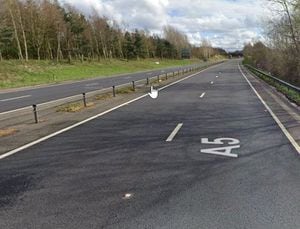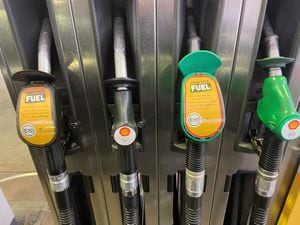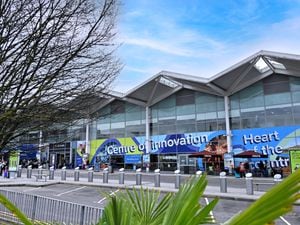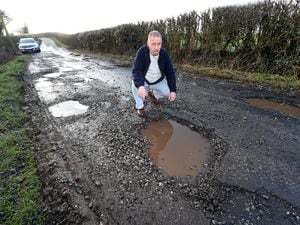Motoring groups turn up pressure for turning A-roads into dual carriageways
Motoring groups have renewed calls for A-roads to be made into dual carriageways, putting more of a spotlight on two campaigns in the Shropshire region.

New analysis has revealed how rare it is for A-road stretches in Britain to be dual carriageways - which will come as little surprise to those who have been campaigning for decades to dual the A5 and to bypass Pant and Llanymynech.
Recently both those long-running issues resurfaced in Parliament when a regional MP was given some good signals by the Prime Minister. The possibility of some of the billions of pounds being redirected from the HS2 rail project into roads was put on the agenda.
Now in an analysis of Department for Transport (DfT) figures the PA news agency says fewer than one in 10 A-road miles are dualled in some 36 local authority areas.
Most of the 36 areas are largely rural, such as Pembrokeshire, where only 0.8 per cent of A-road miles are dualled. The proportion of A-road miles that are dual carriageway across Britain barely changed in a decade, from 17 per cent in 2012 to 18 per cent in 2022.
Motoring organisation the AA says that converting single carriageway A-roads into dual carriageways can "improve traffic flows and air quality whilst reducing collisions".
The PA news agency says dual carriageways have been found to improve safety and reduce congestion compared with single-carriageway roads. Their extra lanes and the barrier between vehicles travelling in opposite directions make it much easier and safer for slower traffic to be overtaken.
Speed limits on dual carriageways are up to 70mph, whereas on single carriageway roads they can be no more than 60mph.
Halton, in nearby Cheshire, is the local authority area with the highest proportion of A-road miles that have been dualled, at a staggering 70.1 per cent.
AA president Edmund King said: "The dualling of key A-roads greatly enhances connectivity and indeed road safety.
"Improving unsafe, congested, single carriageway roads and building essential bypasses, can improve traffic flows and air quality whilst reducing collisions.
"It is important to have a good network of connected and dualled A-roads, which are vital for the economy and environment.
"Congestion costs businesses billions of pounds and is detrimental to air quality and CO2 emissions."
Mr King said a "great example" of the benefits of dualling A-roads is the A11 in Norfolk.
"Some 30 years ago the A11 was a mixed bag of single carriageway roads, many going through the middle of towns and villages, causing chaos and congestion," he said.
"Following the A11 'dual it' campaign, all of the road is now high-quality dual carriage which not only speeds journey times but bypasses the towns and villages and enhances safety and the environment in those villages."
Steve Gooding, director of motoring research charity the RAC Foundation, said: "For a whole array of financial and environmental reasons, it is implausible to think that we'll see a large-scale initiative anytime soon to dual our single carriageway A-roads.
"A more practical and cost-effective answer to improving safety on A-roads is probably to 'engineer out' identified problems and hazards rather than try to upgrade hundreds of miles of routes, with all that entails."
A DfT spokeswoman said: "While Britain's roads are some of the safest in the world, we're committed to further reducing collisions and improving our road network.
"Our £24 billion road strategy will ensure we have A-road network that is safe, reliable and well-maintained.
"We have also redirected funding from HS2 savings for road projects across the country - benefiting more people in more places, more quickly including developing the A1 and A75 schemes as part of Network North."
The Government's Network North document states that individual projects "will be subject to the approval of business cases".
In a recent report the Shropshire Star noted that the dualling of the A5 through Shropshire is to be considered by the Government as part of its wider regional roads strategy.
Prime Minister, Rishi Sunak, also said a scheme for the Pant/Llanymynech bypass was being developed.
Mr Sunak was speaking in Prime Minister's Question Time in an answer to Clwyd South MP and the Conservative Parliamentary Candidate for North Shropshire, Simon Baynes.
The MP, whose Welsh constituency will disappear in boundary charges at the next election, raised the topic of transport projects on the Wales/north Shropshire border.
During his question, Mr Baynes MP highlighted transport projects that have been confirmed by the UK government over the past few weeks, including reopening the Gobowen to Oswestry line and the electrification of the North Wales mainline.
He also outlined projects that have already been achieved in the wider region, including the reopening of Corwen Station, along with the major Levelling Up Fund investment in the Llangollen and Montgomery canals.
Speaking at PMQs, Mr Baynes said: “The Prime Minister has been a great champion of transport projects on the Welsh borders, such as the electrification of the North Wales mainline, the Gobowen to Oswestry line and major Levelling Up Fund investment in the Llangollen and Montgomery canals.
"Will the Prime Minister now deliver the long-awaited Pant/Llanymynech Bypass and prioritise the dualling of the A5/A483 in Clwyd South and North Shropshire?”
Responding the Prime Minister said: “We are making significant improvements to our cross-border rail services across the union.
"Thanks to our decision on HS2 we can now provide the unprecedented £1 billion of investment to fund the electrification of the North Wales mainline that will ensure reliable, punctual journeys between North Wales and multiple cities across the North West of England.
"We also are continuing to develop the Pant/Llanymynech Bypass scheme in our next round of the road investment plans and the section of the A5 in England will be considered by National Highways as part of the Midlands to Gloucestershire to Wales Route Strategy.”
Plans for a bypass on the A483 at Pant and Llanymynech have been discussed for three decades and at one point reached the stage of a route being chosen. But financial problems led to it being shelved.





